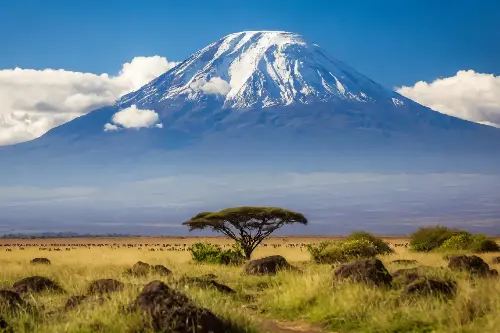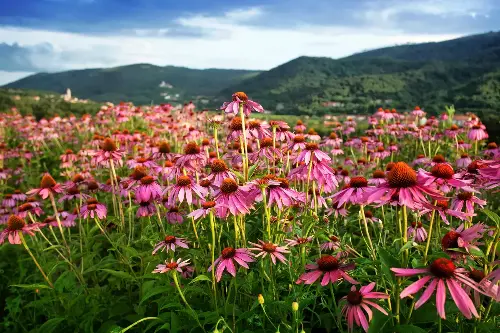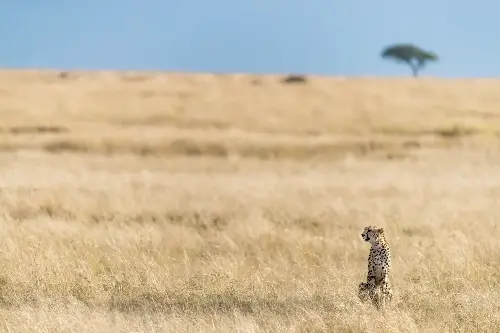Imagine a vast canvas, stroked generously with hues of green and dotted with wildflowers, under an expansive sky. This image encapsulates the serene and often underestimated biomes on our planet: grasslands. These ecosystems are not only spectacular to behold but are crucial to our Earth's health and future.

The Role of Grasslands in Biodiversity
Grasslands are home to a myriad of species, playing a key role in maintaining biodiversity. They support a variety of wildlife, from the majestic lions of the African savannas to the burrowing owls of the North American prairies. These landscapes provide habitat and breeding grounds for these animals, many of which are endemic and cannot be found anywhere else. The incredible diversity of grasses themselves—there are approximately 11,000 species—creates a complex ecosystem where insects, birds, and mammals converge in an intricate web of life.
One of the less visible but remarkable secrets of grasslands lies beneath the surface. The soils of these terrains are among the world’s most significant carbon sinks. They store carbon dioxide, one of the greenhouse gases contributing to climate change. The deep root systems of perennial grasses sequester carbon more effectively than the trees of a forest, locking it away in the ground. Their ability to absorb carbon from the atmosphere and store it underground makes grasslands an essential ally in the fight against global warming.
Water Conservation and The Impact on Agriculture
Grasslands also play a crucial part in water conservation. The extensive root systems of grassland vegetation help to maintain the soil structure, which increases the soil's capacity to absorb and hold water. This aids in reducing runoff and erosion, thereby improving water quality. Moreover, these landscapes act as natural filters, breaking down pollutants and improving the cleanliness of the water that eventually reaches our rivers and lakes.
Agriculturally, grasslands around the world are pivotal. These regions are often used for grazing livestock, a critical component of the livelihoods of many communities, especially in developing countries. Furthermore, the sustainable management of grasslands can enhance soil fertility and increase the resilience of food production systems against the backdrop of climate change. By preserving these environments, we also safeguard the heritage and socioeconomic stability of pastoral cultures that have thrived on these lands for centuries.

The Pharmacy of the Wild
The biodiversity of grasslands extends to a wealth of medicinal plants, many of which have been used in traditional medicine for thousands of years and are now being explored by modern science. The echinacea of North American prairies, for instance, is known for its immune-boosting properties.
Similarly, many grassland plants have unique substances that can be, or are currently, harnessed for pharmaceutical purposes. The conservation of grasslands, therefore, might be imperative for unlocking new medical discoveries that benefit humanity.
Grasslands as Recreation and Inspiration
On a lighter note, grasslands offer scenic landscapes for recreation and tourism, providing a chance to reconnect with nature and escape the bustle of urban life. The calmness and open vistas are not only a sanctuary for wildlife but also for the human spirit. These spaces have inspired countless artworks, literature, and folklore, embedding themselves into the cultural fabric of society.
Despite their incredible value, grasslands are under threat from human activity. The conversion of these areas for agriculture, urban development, and the impact of climate change puts the existence of grasslands at risk. It is essential to acknowledge the undeniable services that grasslands provide to our planet and our responsibility to protect them.

Conservation efforts, such as sustainable management practices and the establishment of protected areas, are vital for the preservation of these landscapes. Additionally, educating the public about the importance of grasslands can empower communities to become stewards of these natural treasures.
In conclusion, the secrets of grasslands reveal their integral role in safeguarding the Earth's health and our future. These ecosystems are not just expanses of grass—they are the life support systems that benefit the climate, biodiversity, agriculture, and human well-being. As we continue to unravel the mysteries and embrace the wonders of grasslands, we should equally dedicate efforts to their conservation, ensuring these spectacular landscapes remain vibrant for generations to come.
